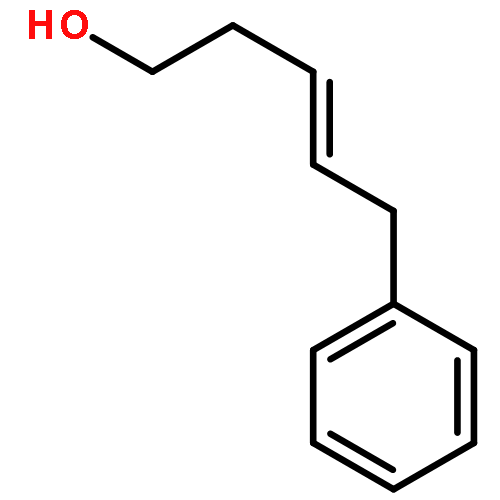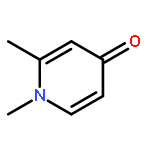Co-reporter:Avninder S. Bhambra, Mark Edgar, Mark R.J. Elsegood, Yuqi Li, George W. Weaver, Randolph R.J. Arroo, Vanessa Yardley, Hollie Burrell-Saward, Vladimir Krystof
European Journal of Medicinal Chemistry 2016 Volume 108() pp:347-353
Publication Date(Web):27 January 2016
DOI:10.1016/j.ejmech.2015.11.043
•Perfluorinated building blocks used in synthesis of heterocyclic scaffolds.•SNAr substitution reactions employed to deliver 6-benzimidazol-1-ylbenzothiophenes.•IC50 values of lead compounds were <1 μM against Trypanosoma brucei rhodesiense.Current treatments for Human African Trypanosomiasis (HAT) are limited in their application, have undesirable dosing regimens and unsatisfactory toxicities highlighting the need for the development of a safer drug pipeline. Our medicinal chemistry programme in developing rapidly accessible and modifiable heterocyclic scaffolds led to the design and synthesis of novel substituted benzothiophenes, with 6-benzimidazol-1-ylbenzothiophene derivatives demonstrating significant antitrypanosomal activities (IC50 < 1 μM) against Trypanosoma brucei rhodesiense and no toxicity towards mammalian cells.
Co-reporter:Natasha H. Slater, Benjamin R. Buckley, Mark R. J. Elsegood, Simon J. Teat, and Marc C. Kimber
Crystal Growth & Design 2016 Volume 16(Issue 7) pp:3846-3852
Publication Date(Web):May 17, 2016
DOI:10.1021/acs.cgd.6b00388
By way of appending the C2-symmetric carbocyclic cleft diol with thiocarbamates with varying substituents, significant control of the hydrogen bonded network can be achieved. Smaller alkyl substituents lead to the formation of stacked columns of components with the apex of one molecule suitably aligned in the cleft of a second. Aryl substituents, however, lead to the formation of ribbons via an H-bonding network. Additionally, the packing of these ribbons into networks is considerably different between the enantiopure and racemic clefts, with the latter giving rise to channels within the crystal structure.
Co-reporter:Beatriz Fernandez, Mark R.J. Elsegood, Gary Fairley, Gareth J. Pritchard, Simon J. Teat, George W. Weaver
Tetrahedron Letters 2015 Volume 56(Issue 36) pp:5120-5122
Publication Date(Web):2 September 2015
DOI:10.1016/j.tetlet.2015.07.029
An unexpected azeto[2,3-c]quinolizinedione has been isolated during synthetic studies on the base catalyzed condensation of ethyl 6-methylpyridin-2(1H)-on-1-ylacetate with benzil. Closure of a fused four-membered azetidinone ring occurred when potassium hexamethyldisilazide was employed as the base. The structure of the product was confirmed by synchrotron X-ray crystallography. A possible mechanism for the formation of the product is considered.
Co-reporter:Sophie H. Dale, Mark R. J. Elsegood and Simon J. Richards
Chemical Communications 2004 (Issue 11) pp:1278-1279
Publication Date(Web):10 May 2004
DOI:10.1039/B402922D
Single crystal X-ray structures of methanol solvates of trimesic acid provide an insight into the step-wise dis-assembly of this strongly hydrogen-bonded acid through the disruption of acid–acid head-to-tail dimer motifs by alcohols.
Co-reporter:Sophie H. Dale, Mark R. J. Elsegood and Augusta E. L. Coombs
CrystEngComm 2004 vol. 6(Issue 59) pp:328-335
Publication Date(Web):08 Nov 2004
DOI:10.1039/B410461G
Hemimellitic acid (benzene-1,2,3-tricarboxylic acid) has received surprisingly little attention in the field of crystal engineering, despite it possessing three carboxylic acid groups. Here we utilise this robust functionality in the creation of hydrogen bonding arrays within which solvent molecules (methanol, ethanol, 1-propanol, 2-propanol, 2-methylpropan-2-ol, acetonitrile and acetone) are enclosed. The nature of the solvent of crystallisation (and hence inclusion) allows the hydrogen bonding networks to adopt various architectures including the common brick-wall and herringbone arrangements. The supramolecular hydrogen bonding motifs within the arrays are identified using Etter's graph set analysis.
Co-reporter:Sophie H. Dale, Mark R. J. Elsegood and Carl Redshaw
CrystEngComm 2003 vol. 5(Issue 65) pp:368-373
Publication Date(Web):03 Oct 2003
DOI:10.1039/B308407H
Here we present four new structural determinations of p-But-calixarene acetonitrile clathrates, namely p-But-calix[6]arene·1.5MeCN (1), p-But-calix[6]arene·2MeCN (2), p-But-calix[8]arene·4MeCN (3) and p-But-calix[8]arene·2MeCN (4), and utilise the Cambridge Structural Database to highlight the extent of polymorphism and pseudopolymorphism within the solvent clathrate structures of these key compounds. Compounds 1 and 2 are the first examples of polymorphism and pseudopolymorphism in p-But-calix[6]arene solvent clathrates, the former phenomenon having been previously seen in p-But-calix[4]arene toluene clathrates and the latter in p-But-calix[8]arene pyridine clathrates, while compounds 3 and 4 themselves exhibit pseudopolymorphism.












![Phosphine, [2-(diethoxymethyl)phenyl]diphenyl-](/data/chemimg/3726500/177955-61-2.png)
![Phosphine, [2-(diethoxymethyl)phenyl]diphenyl-](/data/chemimg/3726500/177955-61-2_b.png)
![Pyridine, 2-[(2R,4S,5R)-2,3,4-trimethyl-5-phenyl-2-oxazolidinyl]-](http://img.cochemist.com/ccimg/853900/853802-38-7.png)
![Pyridine, 2-[(2R,4S,5R)-2,3,4-trimethyl-5-phenyl-2-oxazolidinyl]-](http://img.cochemist.com/ccimg/853900/853802-38-7_b.png)


![5,11-Methanodibenzo[a,e]cyclooctene-6,12(5H,11H)-dione, (5R)-](http://img.cochemist.com/ccimg/59200/59147-66-9.png)
![5,11-Methanodibenzo[a,e]cyclooctene-6,12(5H,11H)-dione, (5R)-](http://img.cochemist.com/ccimg/59200/59147-66-9_b.png)
![Benzoic acid, 2-[[(diphenylphosphino)methyl]amino]-](http://img.cochemist.com/ccimg/434400/434315-08-9.png)
![Benzoic acid, 2-[[(diphenylphosphino)methyl]amino]-](http://img.cochemist.com/ccimg/434400/434315-08-9_b.png)